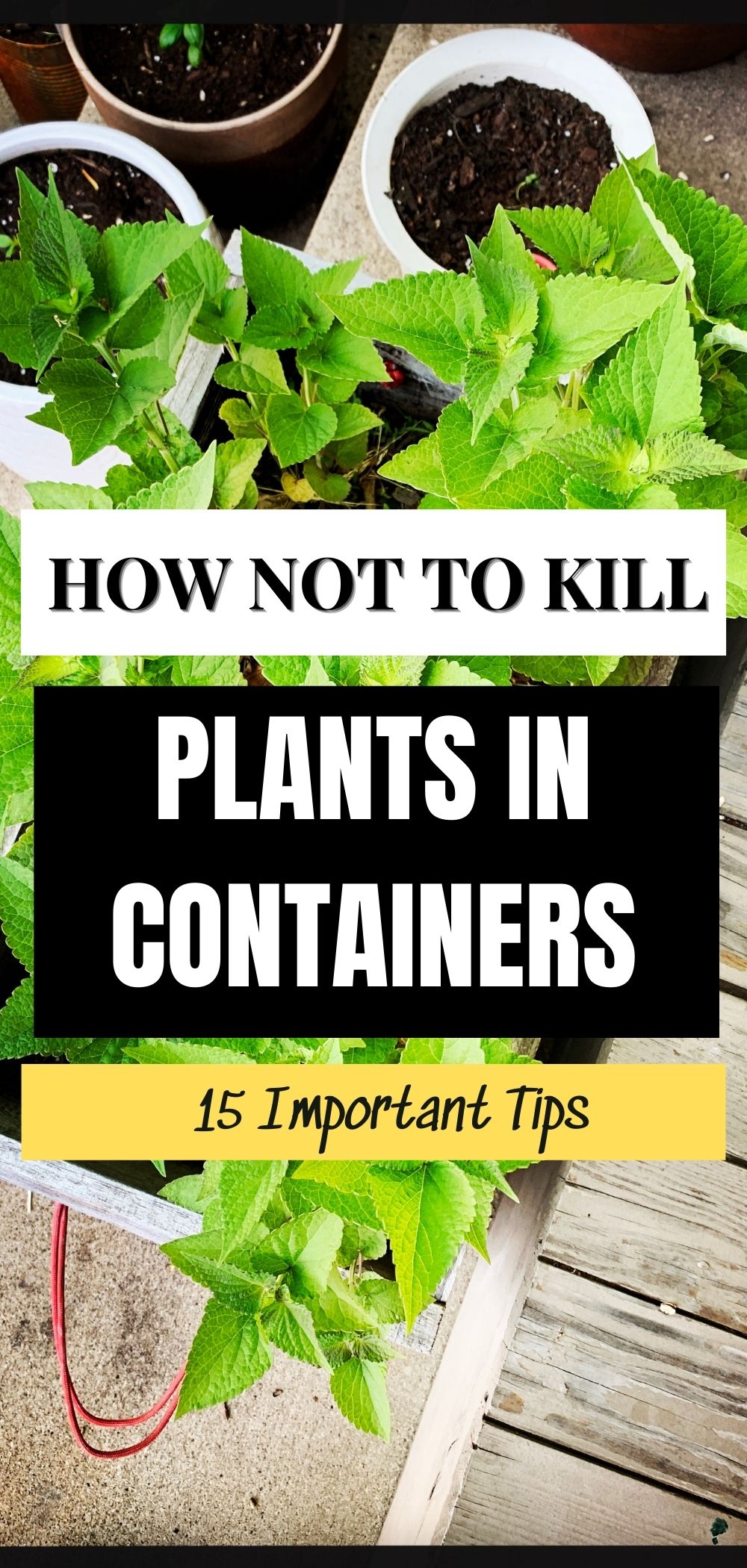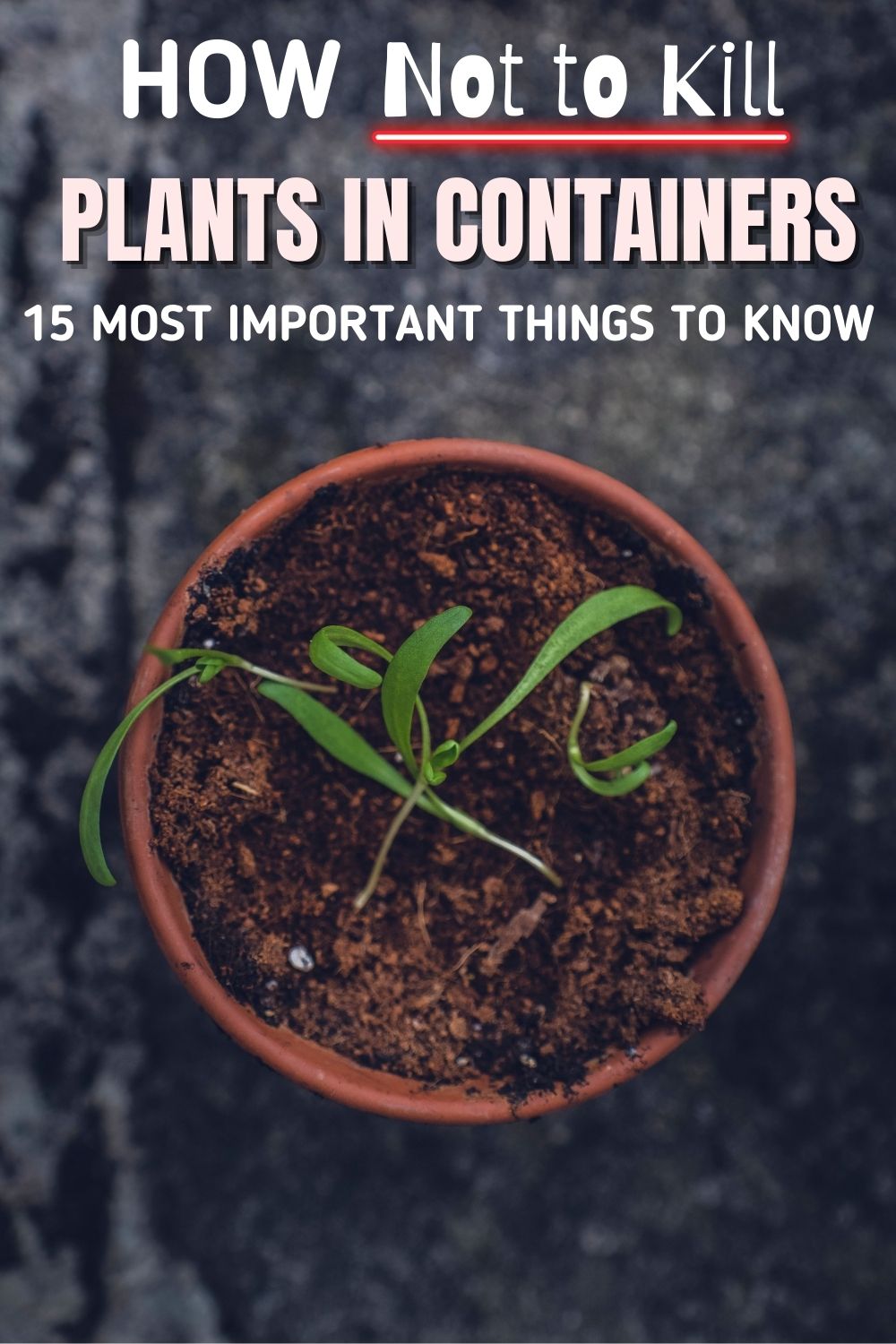GENERAL GARDENING
How Not to Kill Plants in Containers – 15 Most Important Things to Know
 You keep asking what you did wrong, and still, there is not a logical explanation..right?
You keep asking what you did wrong, and still, there is not a logical explanation..right?
Stop worrying and take a look at these 15 things you might be doing wrong and you are not even aware of it and stop killing your precious houseplants!
1. Ignoring the Instructions
Instructions are placed there in order to be followed, instead of ignored! So, next time don’t go straight to planting but read the instructions first as they will tell you everything you need to know about your plant!
2. Overwatering
There are many species of plants and the line between watering and over-watering is very little, so sometimes it is hard to know whether you are doing this common mistake or not.
You can avoid overwatering and suffocating your plants by allowing the soil to dry to the touch between watering. Or, insert a finger into the soil up to the second knuckle, or simply test the soil through a drainage hole to see how moist it actually is!
3. Under-watering
Underwatering is just as harmful as overwatering. Plants that don’t get enough water look droopy or wilted and start yellowing or have dried leaves. Get to know your plants and their needs, stick to the schedule, test their soil and don’t leave them without watering when your out of town, just ask someone to help you and water them!
4. Not Enough Root Space
When your plants grow they need more space. In order not to compromise them here are some signs to help you know if the plant has outgrown its current container:
- Roots poking out of the bottom of the pot
- There are more roots than soil when you ease the plant out of its container
- Straggly, pale plants that have stopped growing
- Water runs immediately out the bottom without soaking into the soil
- Top heavy plants that keep falling over
If any of these sings appear, re-pot your plant and remove as much of the old soil as you can. Prune off damaged roots and encourage new and healthier growth!
5. Using the Wrong Soil
You need to make sure that the soil you use is suitable for your houseplant. If you are unsure what kind of soil your plants needs, a general indoor potting soil will usually suffice for most plants, although some – like orchids and cactus – need special mixes.
6. Providing the Wrong Light Levels
Light is another factor many people tend to go wrong with.
For example, succulents are desert-plants so they are used to full sun and this is what they should get. Ferns grow in the forest, so they need some shaded areas.
If leaves begin to curl under, brown around the edges, or the new leaves are smaller than the old ones, then your plant may be getting too much light.
Or, you should move your plant closer to a light source if it is beginning to look spindly, the stems grow abnormally long, the leaves lack color and are undersized, or leaves start falling off.
7. Exposure to Extreme Temperatures
Most plants grown in homes and offices thrive at between 60 and 75 degrees F.
Temperatures that are too low damage growth and cause plant death, especially when they are also being overwatered!
Therefore, it is necessary to maintain a moderate temperature year round and your plants should thrive.
8. Providing the Wrong Humidity Levels
Most, but not all, houseplants need humid air to thrive – usually between 50% and 60% – yet the humidity level in the average home is often far below this.
Generally, the thinner the leaf, the greater its need for humidity. Thick, leathery, waxy or hairy leaves can survive on lower levels.
If the leaf edges are crinkly and brown, the tips of new leaves dry up, or flower buds brown and fall off, then you need to make your air more humid, or move your plants to the kitchen or bathroom for a while.
9. Not Using the Right Amount of Fertilizer
Plants need nitrogen, phosphorus and potassium in order to stay healthy.
If you don’t fertilize your plants regularly, you may notice the lower leaves lose color and drop off, the new leaves are progressively smaller than older ones, and the stems are stunted.
Too much fertilizer can also do a lot of damage as over-fertilized plants may wilt even when watered, or the leaves may get soft.
10. Sunburn
Sunburn is caused by too much direct sunlight on the plant. You will notice the leaves turn brown at the tips, or they may turn white and drop off. This happens to plants that are moved outdoors on sunny days, or plants suddenly moved from shady to sunny locations within the home, are particularly susceptible.
To save an already scorched plant, move it to a shadier location. Reduce watering for a while, and reduce fertilizers!
11. Neglecting to Groom Them
Pruning or pinching your house plants helps in keeping your plants healthy.
Cut or pinch off any dead stems or branches as they attract fungus. Likewise, remove brown or yellow leaves which can decay leading to diseases that can lead to plant’s death.
12. Frequent Relocation
Don’t move around your plants often as they may become stressed when they readjust all over again. If your plant is thriving in a particular area based on temperature, lighting and humidity levels, then moving it may be detrimental to its health.
13. Ignoring Pests
Several insects and other pests feed on houseplants, which will eventually weaken and kill the plant. Some of the most common pests are aphids, spider mites, mealybugs, scale insects, soil insects, thrips, and powdery mildew.
While it may be tempting to zap these creatures with a chemical pesticide, they contain ingredients which are detrimental to the health of both humans and plants.
So, use a homemade pesticide and you won’t do any damage to your plants.
14. Letting Your Pets at Them
Perhaps you are being too harsh on yourself when it comes to your dead houseplants…your four-legged family members may be the ones at fault!
Don’t let your pets chew on leaves as this can compromise your plant’s health. Also, there are toxic plants to dogs and cats so do your research before your bring your favorite plant home.
15. Giving Up Too Soon
Don’t give up on your plants if you see it looking desperate and dead. Give your plant a chance to come out the other side by helping it get healthier.
Plants have an impressive capacity to re-grow after trauma.
Don’t forget that some plants go dormant seasonally – including poinsettias, amaryllises and cyclamens. Once you leave them alone , they can suddenly come to life again.

If you want to find more natural remedies, take look at the Everyday Root Book!
With 350+ pages, you will be able to replace all of the toxic products and medications in your home with healthier, all-natural alternatives.
You will be confident in knowing exactly what is in the products your family uses and happy with the money you will save every month.
In addition, they offer you three more bonuses + 75% discount only this month!
GET THE EVERYDAY ROOTS BOOK NOW!
Included in this life changing book are:
- 105+ NATURAL HOME REMEDIES – Treat almost any illness with natural ingredients you probably already have in your kitchen.
- 75+ NATURAL BEAUTY RECIPES -Get the best hair and skin you’ve ever had and look younger with these insanely clever natural beauty recipes.
- 35+ DYI HOUSEHOLD PRODUCTS & CLEANERS – Never Buy Toxic Cleaning products again! Save a fortune and your families health with these super simple homemade cleaning products that work better than the chemical ones.


